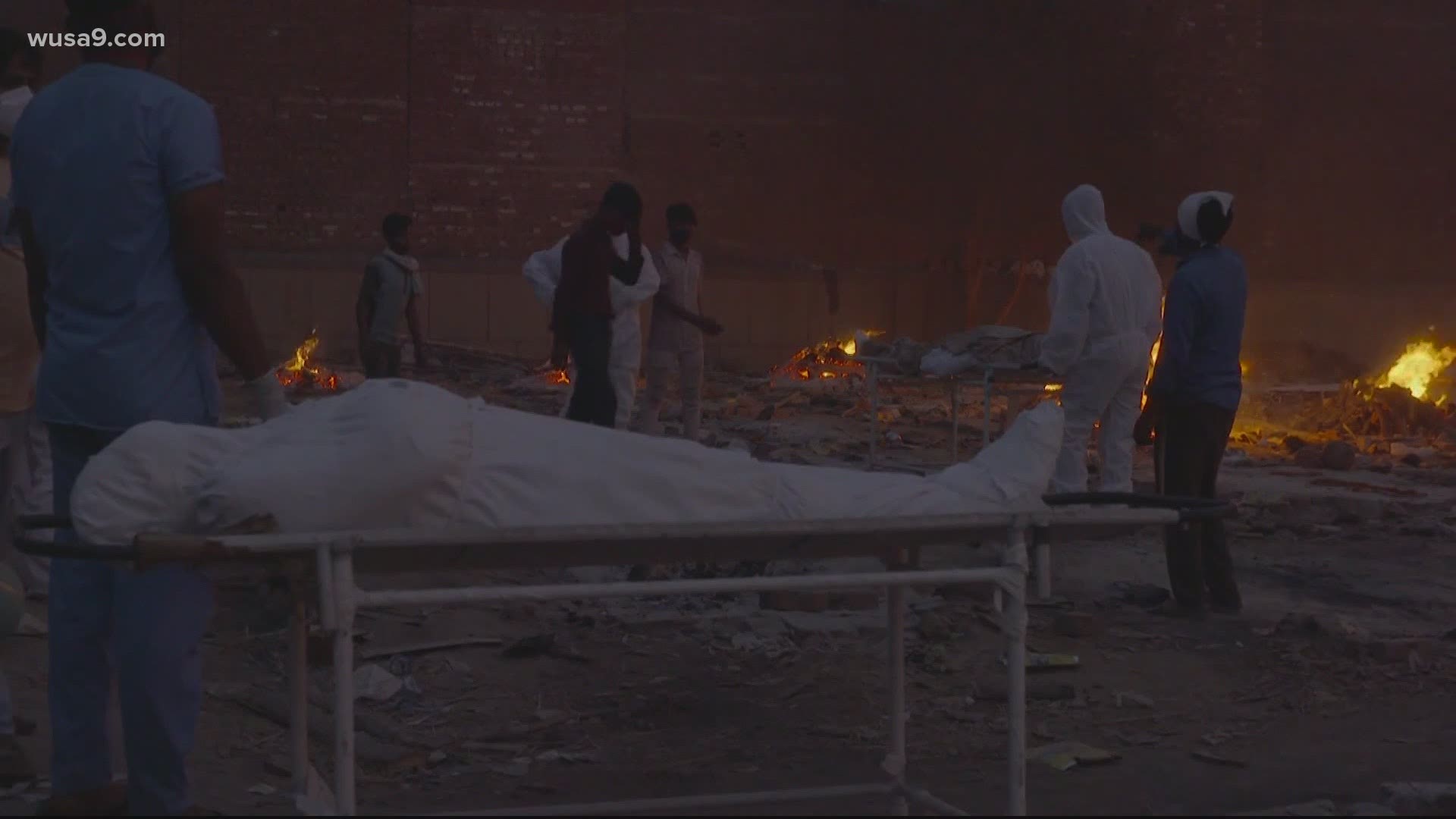WASHINGTON — While COVID-19 infections decline in the United States they continue to skyrocket in India. The country is experiencing a lethal second wave of the virus that has as many as 300,000 people testing positive for COVID-19 per day.
If the pandemic has taught us anything, it is that a health crisis on one side of the world can still have a major impact on the U.S.
Question:
What is happening in India and how could it affect the world?
Answer:
A highly contagious variant combined with a lack of vaccinations is leading to the rise in COVID-19 cases in India.
Sources:
Dr. Amesh Adalja, an epidemiologist from Johns Hopkins University. Dr. Matthew Frieman, an immunologist from the University of Maryland.
What We Found:
The COVID-19 situation in India is the worst in the world right now. The country averages more than 300,000 new COVID-19 infections per day. A number that is significantly higher than the peak for the United States.
“What we're finding in India right now is that there's a variant that's spreading there quite rapidly,” Dr. Frieman explained.
“[Combine that with] an inability to vaccinate much of their population, really only about 9% or 10% of the population has been fully vaccinated,” Dr. Adalja said.
Our experts explained that each infection in India offers an opportunity for the virus to mutate or create a variant. Those variants experts have seen can spread faster, or even evade some levels of immunization.
“The worry is that as their spikes in India, Europe, South Africa or South America, we see these increasing chances of these variants spreading quickly around the world, and even the United States,” Dr. Frieman said.
Another problem, according to Dr. Adalja, is India also is one of the main exporting countries of the COVID-19 vaccines for the world.
“Part of the plans to vaccinate the world hinged on India's ability to export vaccine that they manufactured there,” Dr. Adalja said. “Now, all of their resources are rightly being directed towards their domestic population.”

